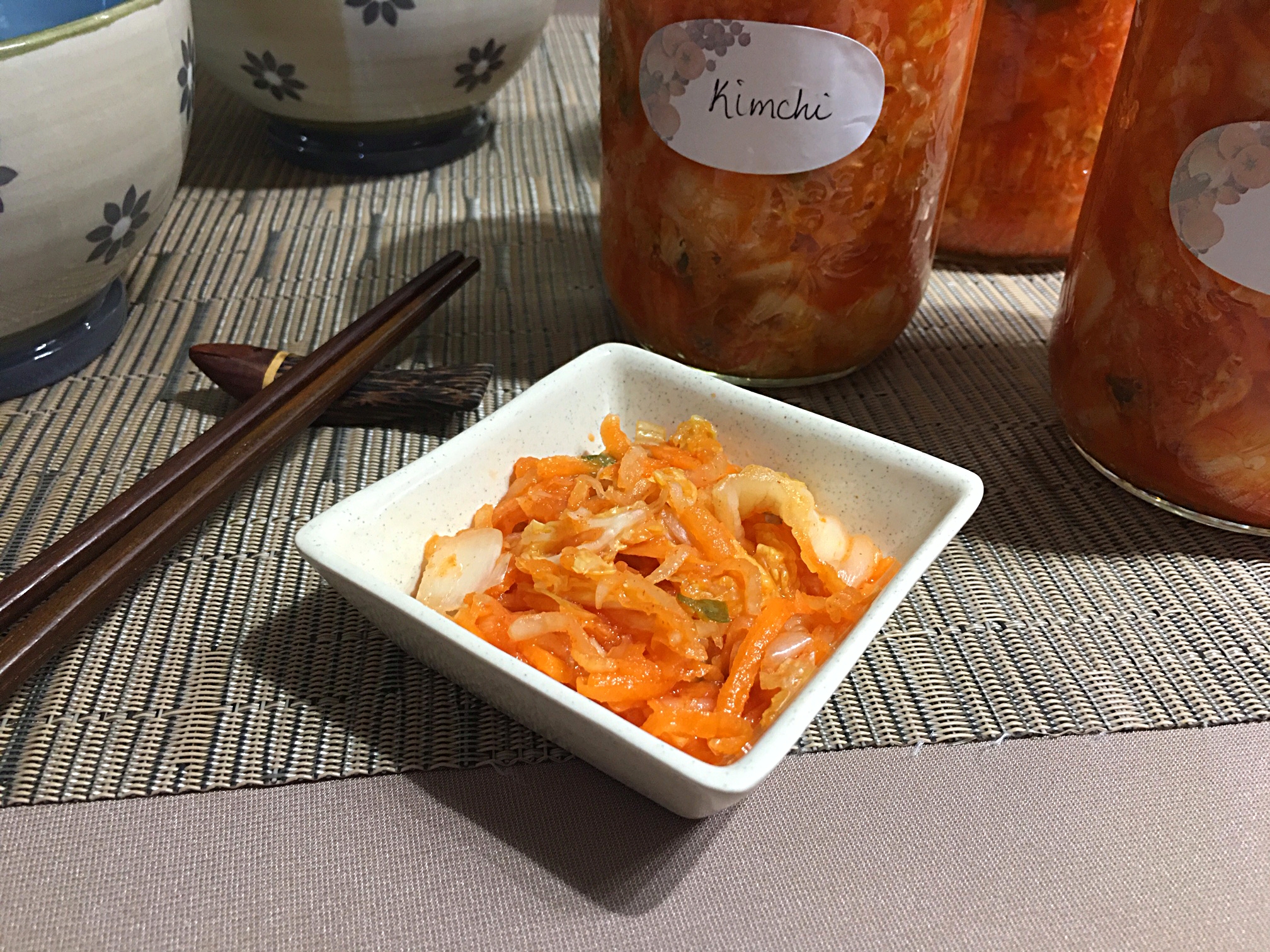Kimchi

In the last 50 years, North America 🌎 has been introduced to so many foreign dishes and ingredients. When it comes to Asian cuisine, the list is quite interesting: Char Siu Pork, Sushi, General Tso’s Chicken, Shan Noodles, Beef Rendang, Satay with Peanut Sauce, Dim Sum, Summer Rolls, Phở, Pad Thai Noodles, Bánh mì, and others including a wide array of desserts, drinks & beverages like Pichi-Pichi, Sweet Sticky Mango Rice, Pisang Goreng, Sake, Plum Wine, Chang Beer, Cà phê sữa đá (Vietnamese Iced Coffee), Soy milk, Bubble Tea, etc.
Korean cuisine has a gorgeous array of flavorful recipes like Bulgogi BBQ, Dakgangjeong, Jeon, Beef Bibimbap, Yakgwa, Hotteok (a favorite of mine) 💖, and many more but there’s one that surpasses all of them and it’s Kimchi!
If you are unfamiliar with it, this is THE most popular side dish in Korean cuisine. Actually it’s more than that… it’s the heart and soul 🥰 of Korean cooking! This dish accompanies almost every Korean meal and it says that a “dinner without Kimchi is considered incomplete”. With a nice mix of fresh produce, this is a great condiment that pairs well with many dishes.
This traditional side dish fermented in brine is a standard food item consumed in Korea. Depending on the region, different ingredients are used when it’s made. In my version, I use Napa cabbage, carrots, daikon, apple (my personal touch), ginger, garlic 🧄, green onions along with a spicy paste.
Daikon… what’s that? It’s basically a “white” radish consumed throughout Asia. It’s the milder and sweeter side of our typical red radishes. Before using this root vegetable, make sure to peel it just like a carrot 🥕. Sometimes called winter radish or Oriental radish, this is a produce you should add to your diet as it enhances dishes so nicely. It’s a great addition for salads or slaws.
An important ingredient for the making of Kimchi is the red chili paste called gochujang. This is a sweet & spicy fermented condiment used a lot in Korean cuisine. I use this condiment when I make my Dakgangjeong or for my Bibimbap but it can also be added to soups 🥣, sauces and stews.
Kimchi is a great side dish to have on hand. Besides an accompaniment, it can be used in many recipes like Kimchi Bibim Guksu (Spicy Cold Noodles), in pancakes, dumplings, rice 🍚 like Kimchi Bokkeumbap, or even on pizza. If you enjoy this Korean food item, you can now make it at home…
Bon Appétit!🍽
Check out these other great side dish recipes…😀
– German Spätzle
– Pisto Manchego
– Moroccan Potato Salad
– Saffron Rice Stuffing
– Mac and Cheese
– Easy Baba Ghanoush
– Carrot & Rutabaga Mash
and for even more condiment recipes, click on this link… Recipe Category • Condiments
Don’t forget to subscribe to our YouTube channel 📽 by clicking on this link… Club Foody YouTube

Kimchi
Hover to scale
Ingredients
- 1/4 cup coarse Himalayan sea salt, dissolved in 1/2 cup boiling water
- 1 1/2 lbs. Napa cabbage, cut into 1 1/2-inch square pieces
- 2 large (265 g) carrots, peeled and grated
- 1 small (530 g) daikon, peeled
- 1 large Fuji apple (substitute Gala or Macintosh), peeled, cored and grated
- 1 ounce grated ginger
- 4 large cloves garlic, pressed
- 4 large green onions, chopped and divided, with white & green parts separated
- 3 tbsp. gochujang paste
- 1 tbsp. fish sauce (substitute low-sodium soy sauce or miso paste)
- 1 tbsp. white vinegar (substitute rice vinegar)
- 1 tbsp. granulated sugar
Directions
- In a bowl, place cabbage and pour in dissolved salt. Cover with cold water and stir. Place a lid or a plate on top to help submerge the cabbage and let it sit for 2 ½ to 3 hours, tossing and swirling every 20 minutes. To know when time is up is when the white part (toughest) is bending easily.
- Drain the cabbage pieces into a colander and rinse them thoroughly a couple of times under cold water; set aside.
- Grate carrots, daikon and apple in a food processor. Transfer the ingredients to a large bowl. To this, add grated ginger, pressed garlic, white parts of green onions, and cabbage; stir well to combine and set aside.
- In a bowl, add red chili paste, fish sauce, vinegar and sugar; stir until smooth.
- Pour the kimchi paste over the vegetables and add the green parts of the onion. Wearing a glove, mix the ingredients until well coated.
- Tightly fill sterilized jars leaving about ½-inch headspace. If there’s any liquid left from the bowl, add it to the jars.
- Close the jars, place them on a baking sheet lined with a silicone mat and transfer to a cool dark place for 2 days.
- Open the jars every 12 hours to release the pressure inserting a knife or gauge to release air bubbles. Transfer to the fridge. It keeps for up to 2 months.
Don't forget to rate and comment on this recipe!


